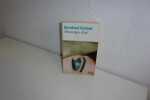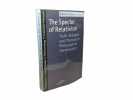-
Type
Book (3346)
Disk (1)
Magazine (42)
-
Latest
Last 24h (5)
Last 3 days (3)
Last month (124)
Last week (32)
-
Language
English (1)
French (3387)
Spanish (1)
-
Century
16th (1)
17th (2)
18th (18)
19th (76)
20th (1066)
21st (1391)
-
Countries
Belgium (460)
Canada (7)
China (5)
Denmark (4)
France (2869)
Greece (1)
Italy (1)
Netherlands (4)
Switzerland (38)
-
Syndicate
ALAC (7)
CLAQ (2)
ILAB (321)
NVVA (3)
SLACES (3)
SLAM (303)
Ad Ingenii Acuitionem". Studies in Honour of Alfonso Maieru
, Brepols - Harvey Miller, 2006 Hardcover. VIII 595 p., 165 x 240 mm, Languages: English, French, Italian, Including an index. Fine copy. ISBN 9782503525327.
The papers presented in this volume in honour of Alfonso Maieru cover some of the major topics of his research area. The institutional and intellectual life of university training in the Middle Ages, including the peculiar tradition of related works, is the focus of the papers by Louis Jacques Bataillon, William J. Courtenay, Jacqueline Hamesse, Zenon Kaluza, Loris Sturlese and Olga Weijers. Three papers, by Jacopo Costa, Pasquale Porro and Thomas Ricklin, deal with philosophical problems in Dante?s Monarchia and Convivio. The complex interrelations between logic and the other main aspects of medieval philosophy, with a particular attention to theology, metaphysics and natural philosophy, are the core of the other papers by Stefano Caroti, Sten Ebbesen, Barbara Faes de Mottoni, Simo Knuuttila, Alain de Libera, Olga Lizzini, Costantino Marmo, Claude Panaccio, Ivan Bendwell, Irene Rosier-Catach, Lambert Marie de Rijk, Leonardo Sileo, Luisa Valente, and Albert Zimmermann.
Langage et connaissance,
Seuil, Points-Essais, 1980, 248 pp., poche, couverture très légèrement jaunie, rousseurs sur les tranches, état très correct.
Phone number : 0033 (0)1 42 23 30 39
SCHAMP Jacques, KINDT Bastien, Cental (eds.) & PHOTIUS Constantinopolitanus
Reference : R78957
(2004)
Thesaurus Photii Constantinopolitani. Bibliotheca [in: Corpus Christianorum, Thesaurus Patrum Graecorum]
Turnhout, Brepols 2004 XCV + 227pp.+ 65 microfiches, in the series "Corpus Christianorum. Thesaurus Patrum Graecorum", hardcover (publisher's green cloth with gilt lettering), 32cm., fine condition, [editor's new price: 495 euro], ISBN 978-2-503-51406-5, R78957
Present-day English syntax ; a survey of sentence patterns
London, Longmans 1966 xx + 434pp., cart.cover, VG
Profil d'Une Oeuvre: Descartes: Discours De La Methode
Editions Hatier 1992 10 6x0 8x21cm. 1992. Broché.
Bon état
Coupables
Gallimard 2015 224 pages 10 8x1 8x17 6cm. 2015. pocket_book. 224 pages.
Très bon état - légères marques de lecture et/ou de stockage mais du reste en très bon état- expédié soigneusement depuis la France
La mémoire des oeuvres
Nathan 1992 in8. 1992. Broché.
Bon Etat de conservation intérieur propre
Phone number : 0033 (0)1 42 23 30 39
Penser la bouche pleine
1983 Editions Fayard - 1983 - In-8, broché - 257 p.
Bon état malgré couverture très légèrement défraîchie (insolé, menus plis et frottements, légèrement émoussés)
Mensonges d'été: Histoires
Gallimard 2013 368 pages 10 8x1 8x17 6cm. 2013. pocket_book. 368 pages.
Etat correct
The Specter of Relativism: Truth Dialogue and Phronesis in Philosophical Hermeneutics (Northwestern University Studies in Phenomenology and Existe)
Northwestern University Press 1995 316 pages 15 19x2 31x22 78cm. 1995. Broché. 316 pages.
proche du très bon état livre un peu déformé intérieur propre
Crime parfait/Les mauvaises lectures: deux nouvelles a chute
Magnard 2011 144 pages 13 1x17 8x0 7cm. 2011. Broché. 144 pages.
Etat correct
L'Enfant de Noe
Magnard 2010 144 pages 12 9x17 9x0 9cm. 2010. Broché. 144 pages.
Très bon état
Les aventures de Poussin 1er 1 Cui suis-je
Editions Dupuis 2013 68 pages 21 8x1 4x27 8cm. 2013. Broché. 68 pages.
Très bon état
Alarm Fur Goethestrabe 3 (Ghost Stories) (Lesetexte Deutsch - Level 1)
Max Hueber Verlag 1986 48 pages 0x16x12cm. 1986. turtleback. 48 pages.
Bon état
Allemand Niveau 6e
Assimil 2019 128 pages 19 4x23 1x1 6cm. 2019. Broché. 128 pages.
Très bon état
Snoopy: Reviens Snoopy
Pocket 11x1 2x17 6cm. Sans date. mass_market.
Très bon état - légères marques de lecture et/ou de stockage mais du reste en très bon état- expédié soigneusement depuis la France
Mandela et Neslon
Ecole des Loisirs 2011 196 pages 12 4x1 8x19cm. 2011. Broché. 196 pages.
Bon état
Mandela et Neslon
Ecole des Loisirs 2011 196 pages 12 4x1 8x19cm. 2011. Broché. 196 pages.
Bon état
Dictionnaire allemand-français
Paris, Charles Hingray, éditeur, 10, rue de Seine Relié 1945 Deux volumes in-8° (15,5 x 24 cm.), reliés demi-basane, 1014 et 1079 pages, ; frottements aux plats, bords, coiffes et coins, quelques rousseurs, assez bon état pour cette série complète de 2 tomes. Livraison a domicile (La Poste) ou en Mondial Relay sur simple demande.
La Logique ou lart de discourir et raisonner
Fayard, Corpus des oeuvres de philosophies en lagnue française, 1984, 371 pp., relié, passages soulginés au crayon, état correct.
Phone number : 0033 (0)1 42 23 30 39
 Write to the booksellers
Write to the booksellers







































